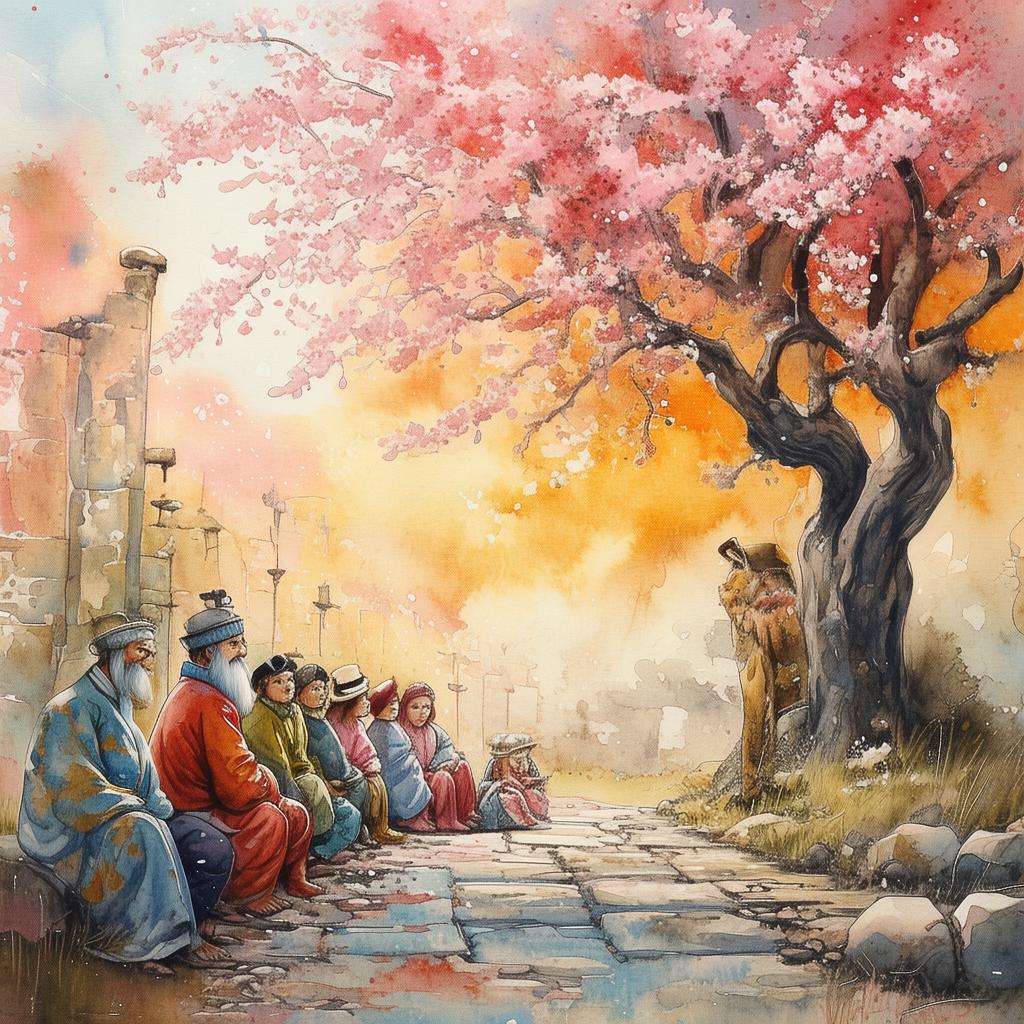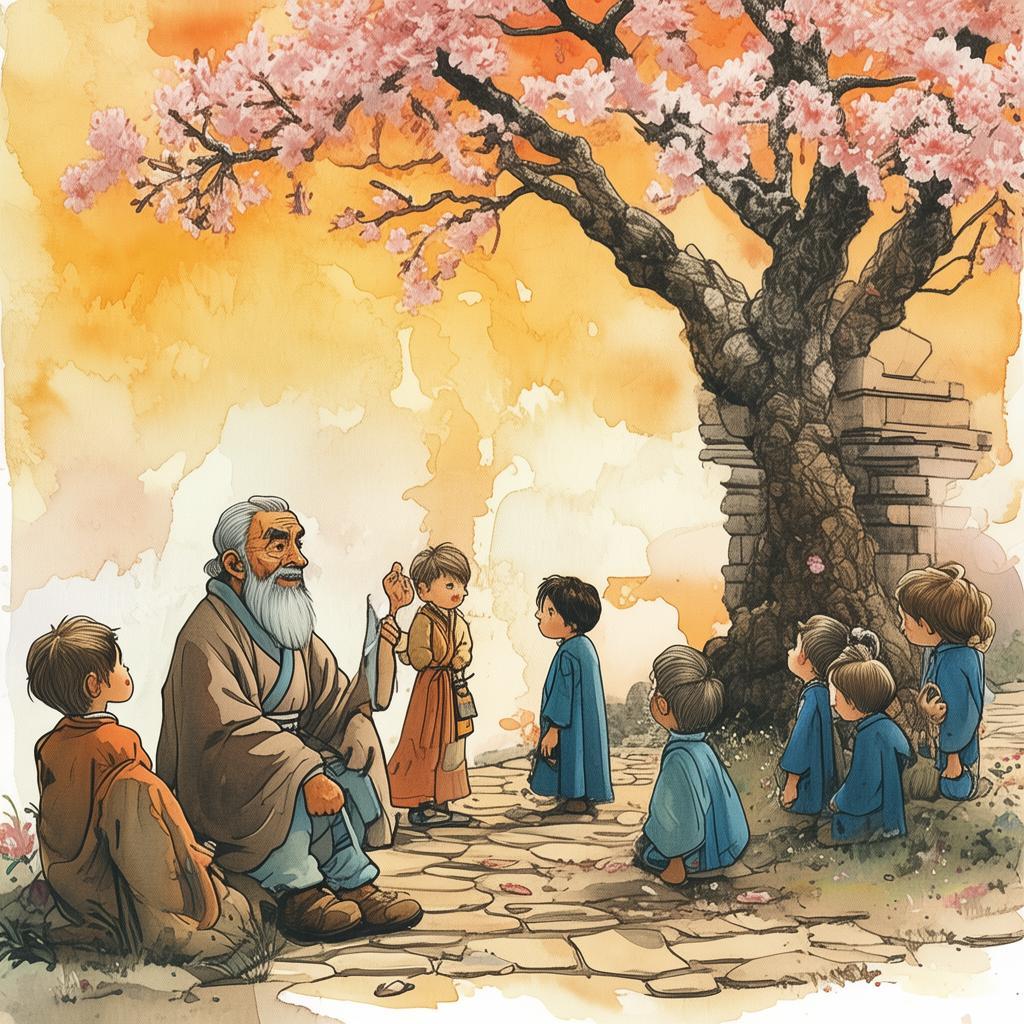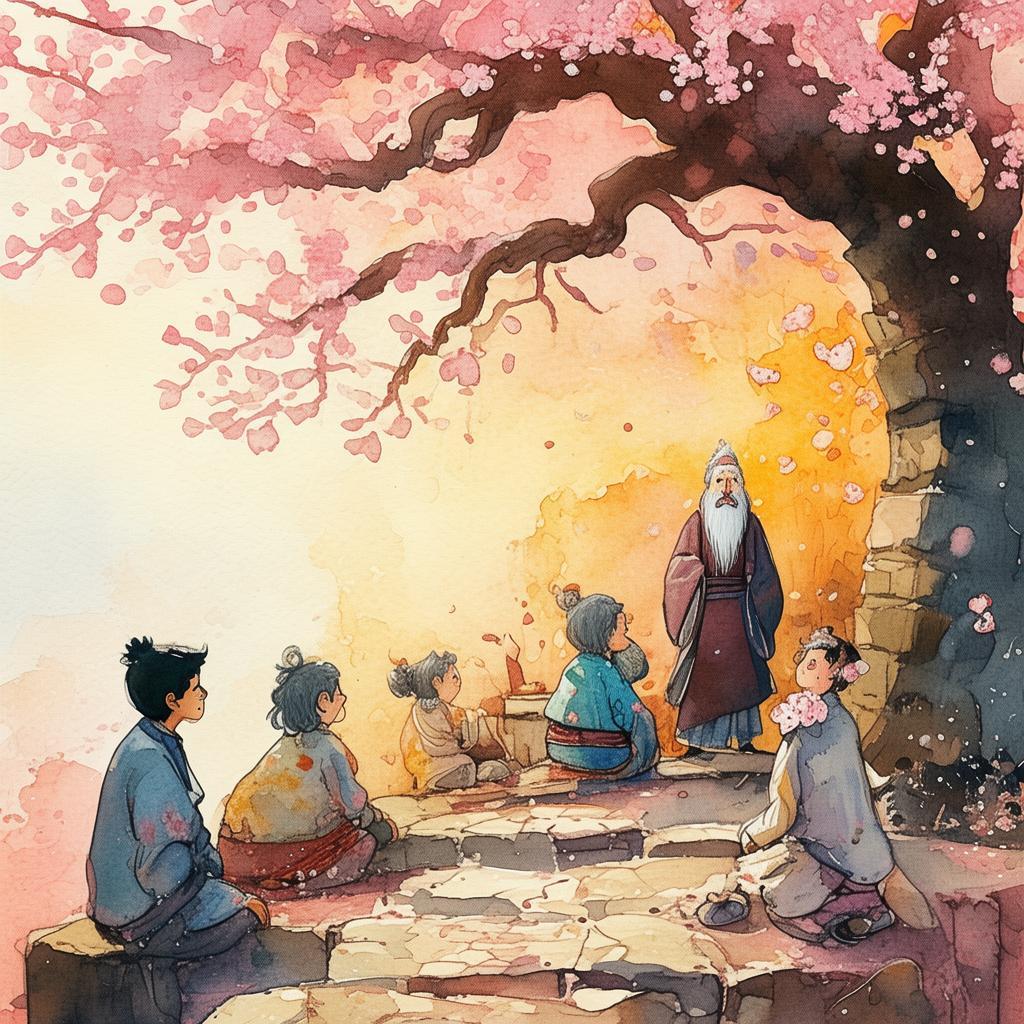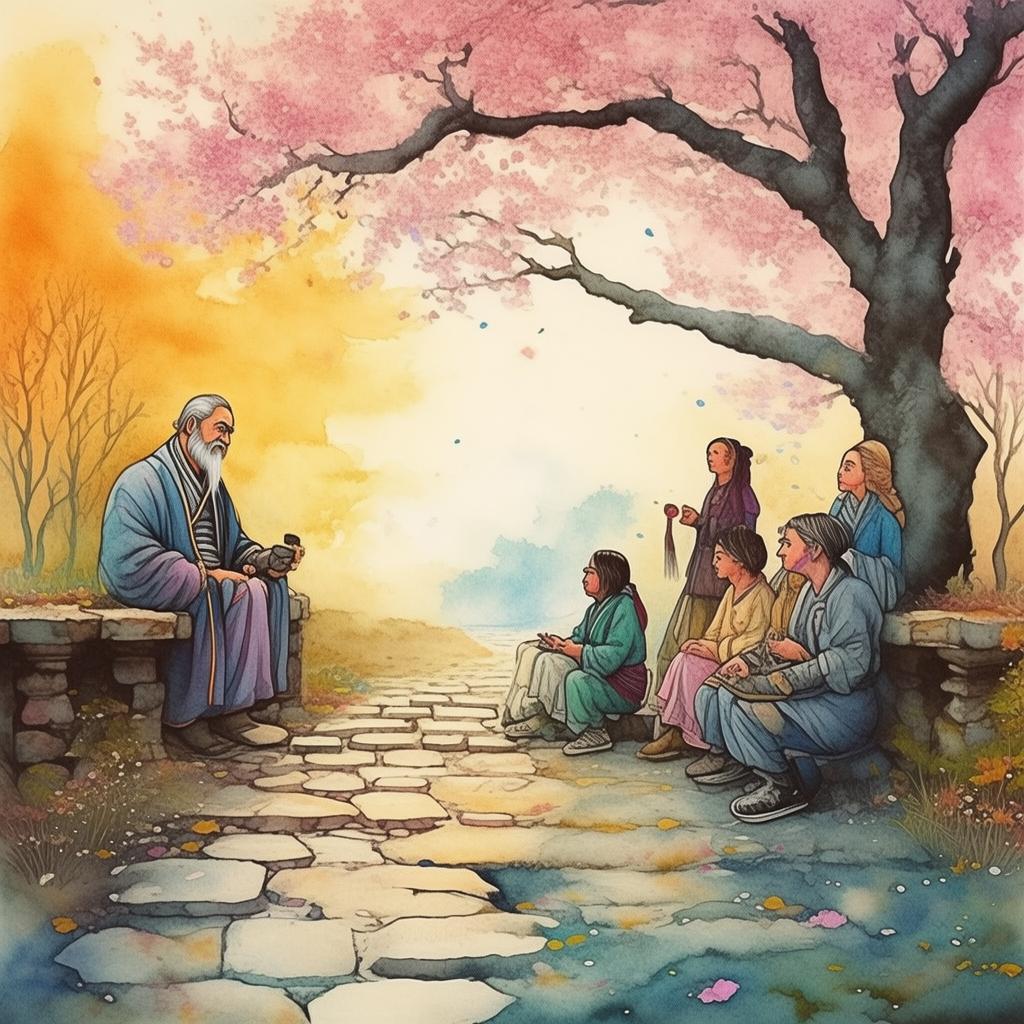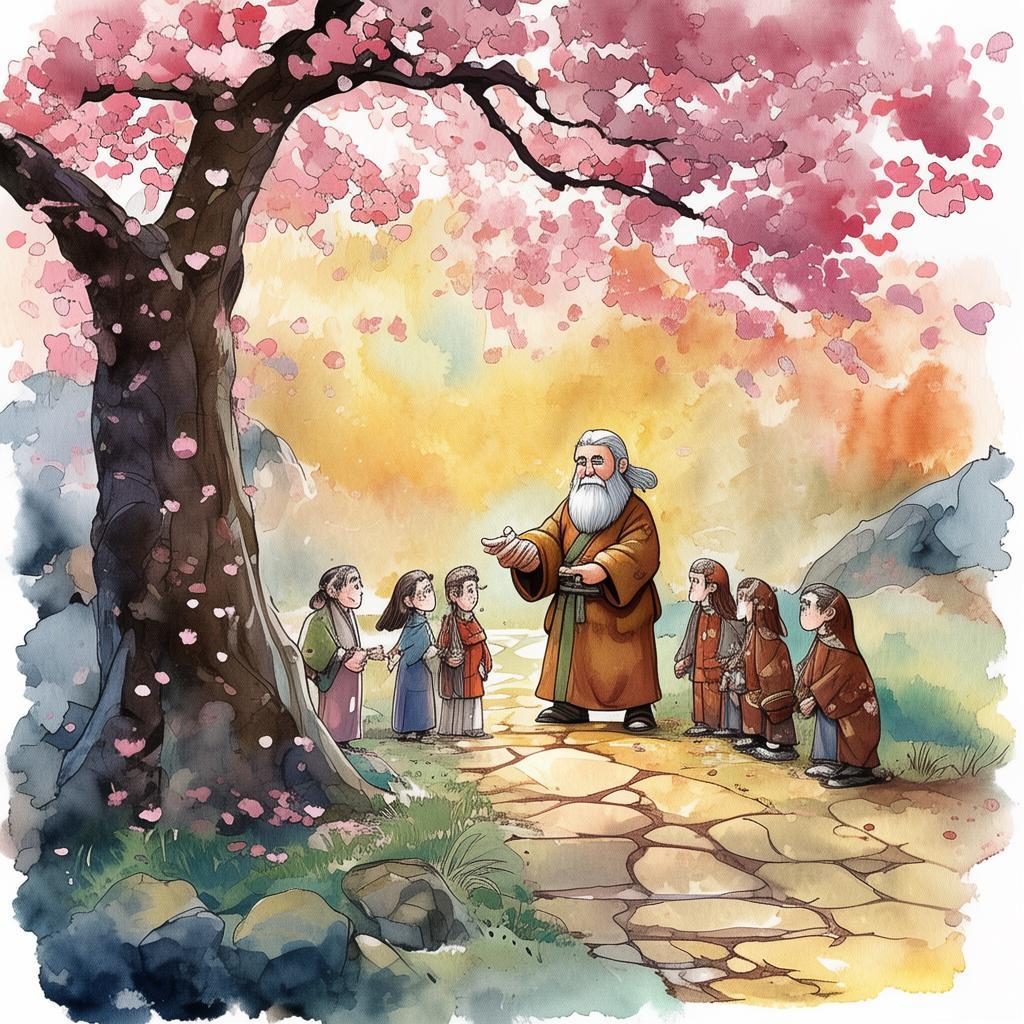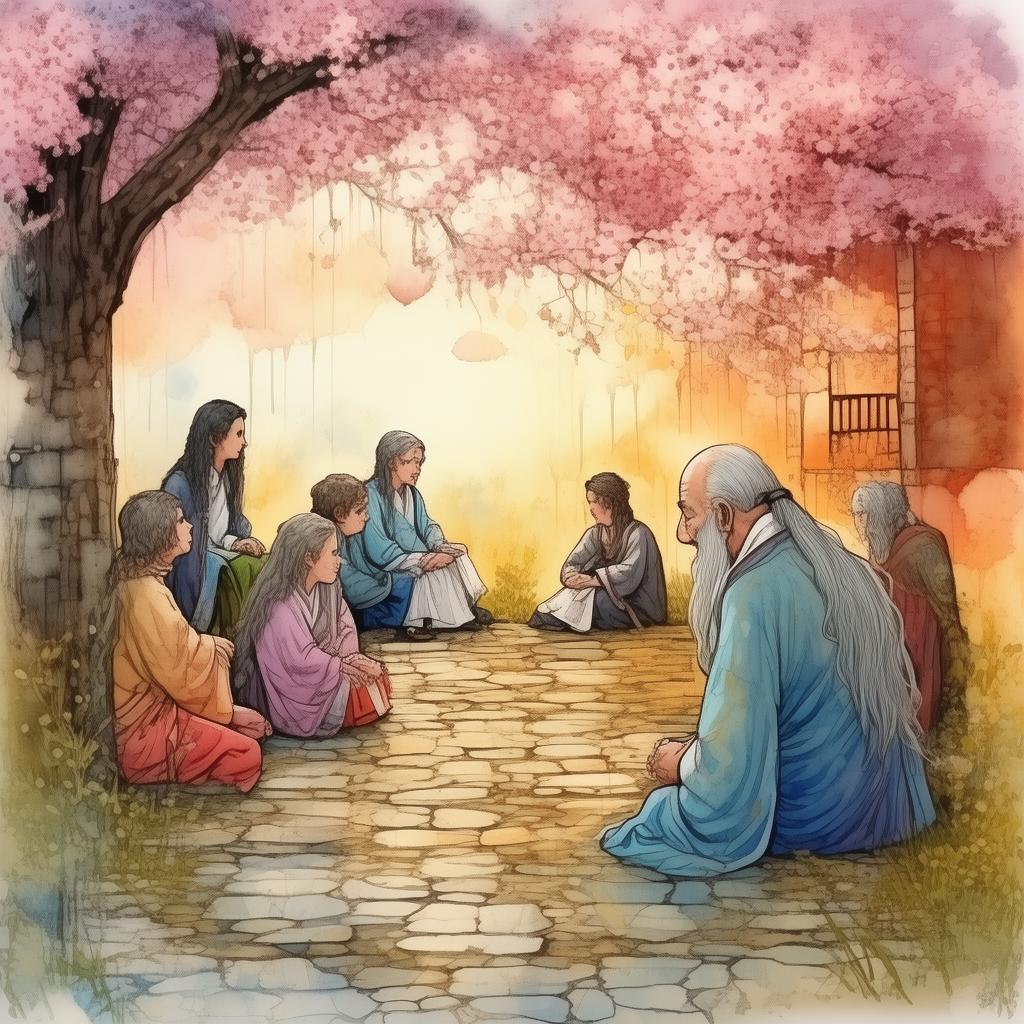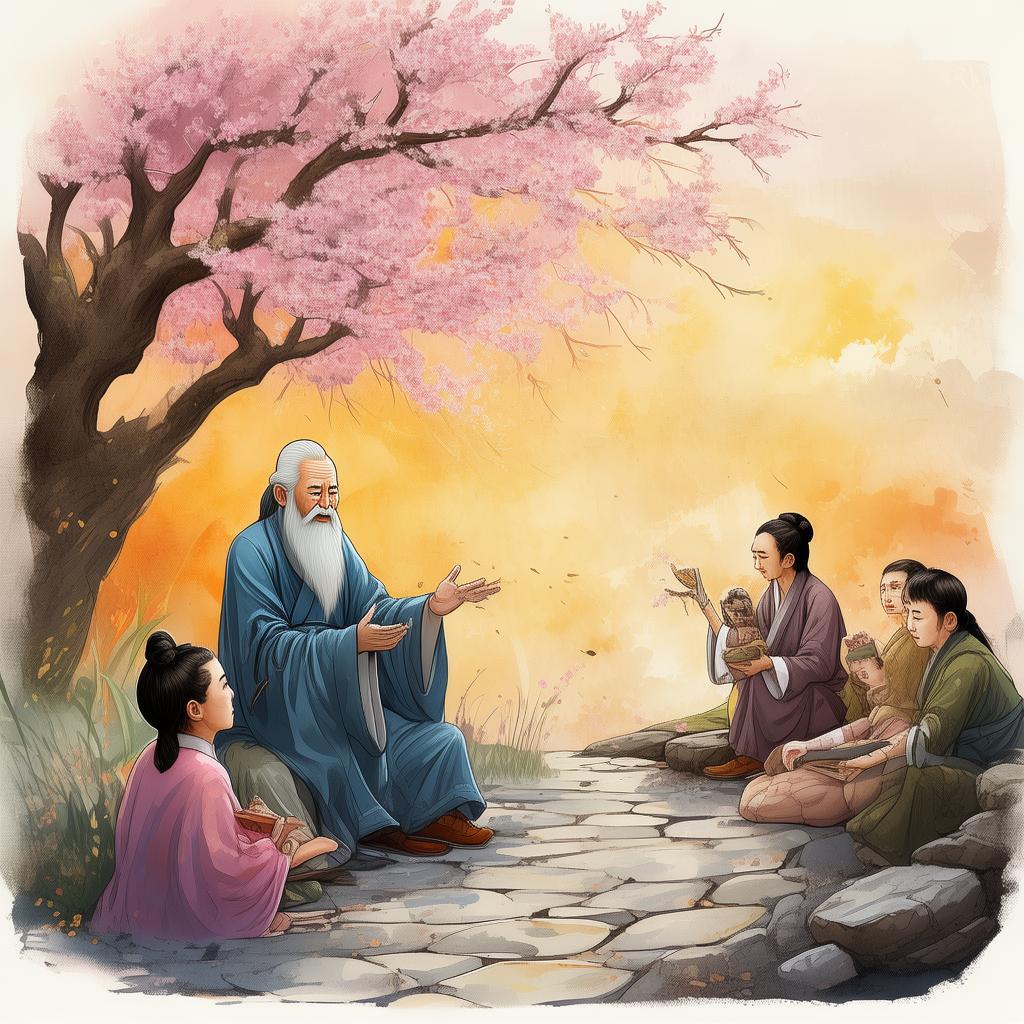The Pen of Deceit: The Fall of a Dynasty
In the bustling capital of the Great Tang Dynasty, the name of the master artist, Zhang Xiaolong, was as revered as the emperor himself. Known for his unparalleled skill in calligraphy and painting, Zhang Xiaolong was said to have the power to breathe life into inanimate objects with just a stroke of his brush. The palace often sought his talent for grand commissions, and the common folk whispered tales of his art as if it held the secrets to the universe.
Among Zhang Xiaolong's many masterpieces was a painting known as "The Radiant Lotus," which adorned the main hall of the imperial palace. It was said to be so lifelike that the lotus flower seemed to shimmer with its own light. The emperor himself had decreed that the painting would be a symbol of the dynasty's prosperity and unity.
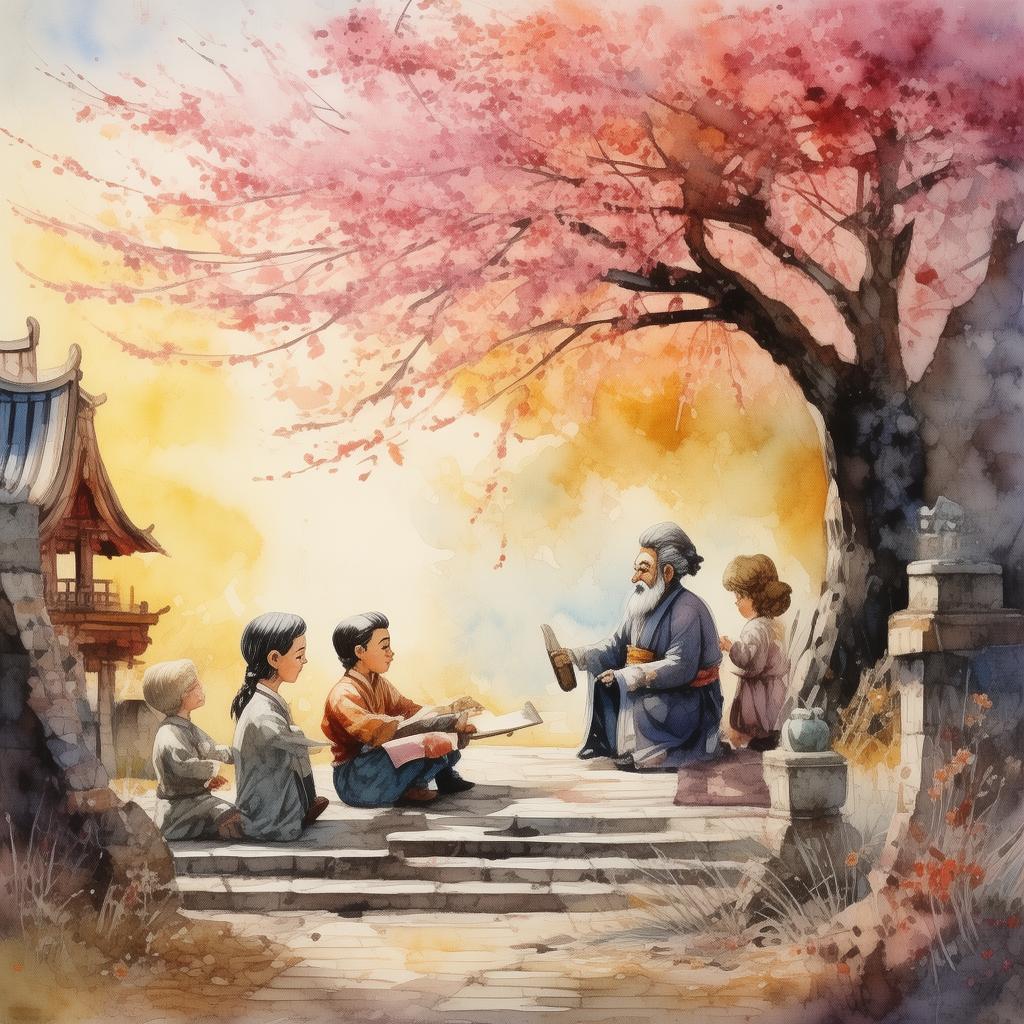
But little did the emperor know that the very essence of his kingdom's pride rested on a foundation of deceit. For in the quiet of the night, when no one was to witness, Zhang Xiaolong would add a single, subtle stroke to his masterpiece—a stroke that would become the catalyst for his own undoing and the kingdom's fall.
The story begins in the quiet of Zhang Xiaolong's workshop, where he worked under the glow of a single candle. His brush, dipped in a pot of ink that shimmered with a faint glow, danced gracefully across the canvas. It was a routine that he had practiced for years, and it was this routine that would ultimately lead to his downfall.
Every night, Zhang would add the same stroke—a delicate line that, to the untrained eye, seemed almost imperceptible. But to those who knew his art, it was a mark of excellence, a testament to his unparalleled skill. The emperor, upon seeing the painting every morning, would always remark on the new stroke, believing that it was a sign of Zhang's growth and mastery.
Little did he know that this stroke was not the product of Zhang's skill but the result of his cunning and deceit. For years, Zhang had been forging a legend of his own—selling the same painting to the palace, each time adding the false stroke to deceive the emperor. The painting had become more than just a piece of art; it was a symbol of Zhang's power and influence over the dynasty.
The truth of Zhang's deception would have remained hidden, were it not for the arrival of a young scholar named Wang Jing. Wang, with his keen eyes and sharp mind, had been sent by the emperor to study the painting and assess its authenticity. The task was simple: confirm that the painting was indeed the work of Zhang Xiaolong.
As Wang studied the painting, he noticed the stroke that had become an annual tradition. He marveled at its beauty, but something in him felt off. He sought the advice of the imperial librarian, who was also an art connoisseur. The librarian, after a careful examination, whispered, "This stroke is not the work of Zhang Xiaolong."
The news spread like wildfire through the palace. The emperor, who had grown fond of Zhang, could not believe the news. He summoned the artist to his presence, demanding an explanation. Zhang, caught in a web of his own making, confessed to the deception.
The emperor was livid. The symbol of his dynasty's power and unity had been a fraud. He ordered Zhang to be stripped of his titles and his wealth. The people of the Great Tang Dynasty were appalled by the revelation, and the trust between the ruler and his subjects began to wane.
The fall of Zhang Xiaolong's reputation was swift and devastating. The people no longer trusted the emperor, nor did they trust the art that adorned their halls. The dynasty's unity, once thought to be unbreakable, began to fracture. Without the common folk's unwavering support, the Great Tang Dynasty's reign was at risk.
Wang Jing, with his newfound knowledge and the support of the emperor, embarked on a mission to expose the truth to the world. He traveled far and wide, spreading the word about Zhang Xiaolong's deception. As the truth unraveled, the once-great dynasty began to falter.
In the end, it was not the stroke of Zhang Xiaolong's brush that brought down the kingdom, but the stroke of truth revealed by Wang Jing. The Great Tang Dynasty, with its grandeur and opulence, crumbled under the weight of its own deceit.
The Pen of Deceit: The Fall of a Dynasty is a story that speaks to the fragility of power and the enduring nature of truth. It serves as a cautionary tale about the perils of blind trust and the importance of integrity in leadership and in the arts.
✨ Original Statement ✨
All articles published on this website (including but not limited to text, images, videos, and other content) are original or authorized for reposting and are protected by relevant laws. Without the explicit written permission of this website, no individual or organization may copy, modify, repost, or use the content for commercial purposes.
If you need to quote or cooperate, please contact this site for authorization. We reserve the right to pursue legal responsibility for any unauthorized use.
Hereby declared.


